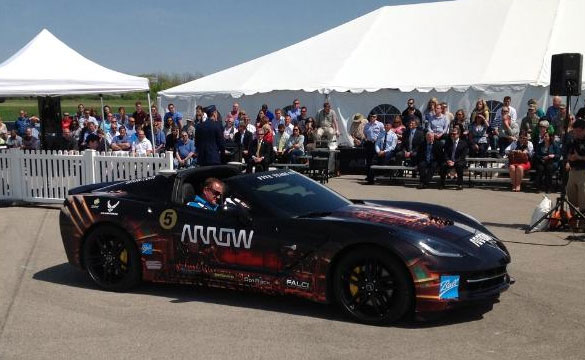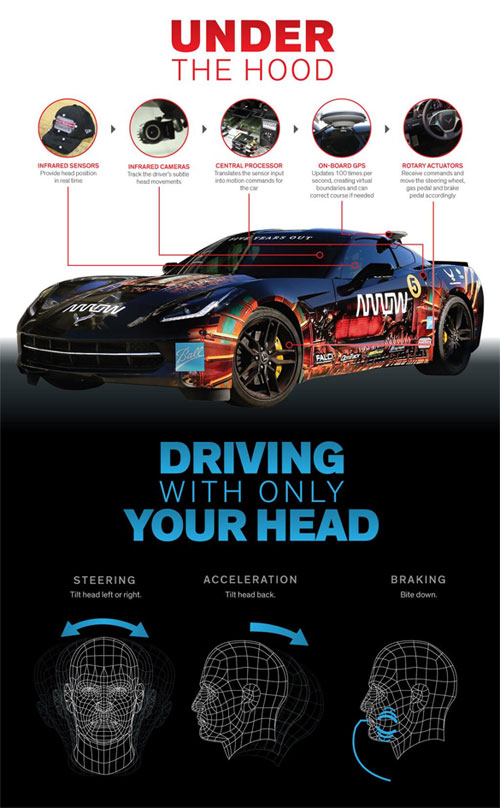Technological advances continue to amaze every day.
This week, a quadriplegic former IndyCar driver was able to drive a 2014 Corvette Stingray on an airstrip near the National Museum of the U.S. Air Force at Wright-Patterson Air Force Base in Dayton, Ohio.
Sam Schmidt’s accident on the track 14 years ago left him unable to move from his shoulders down, but Ball Aerospace & Technologies Corp. and the U.S. Air Force Research Laboratory unveiled new technology Tuesday that will allow him to drive the modified Corvette at speed in the first public display at the Indianapolis Motor Speedway later this month.
“In our work for the Air Force, we’re engineering technologies to prevent and lessen future injuries by learning how humans can effectively interact with machines,” said Tim Choate, Aerospace & Cyberspace Technologies senior business manager, Ball Aerospace. “These technologies are designed to restore independence and enhance warfighter autonomy, and have the added benefit of introducing a new generation of mobility and safety technologies that are critically important for disabled individuals.”
Since Schmidt can still move his head, Ball’s engineers worked hard to figure out a way to convert his head movements into computer commands that allow him to steer, accelerate, and brake the car. Ball Aerospace led the creation of the human-machine interface and the driver guidance system that are key elements of the SAM Project. The Ball engineering team identified the driver’s abilities and matched them to what is needed to drive the car. Critical to this process was determining the optimal combination of machine-controlled and human-controlled functions.
The project’s official name is SAM, short for semi-autonomous motor, and also includes efforts by Arrow Electronics, Inc., Schmidt Peterson Motor Sports and Falci Adaptive Motorsports.
Their research, championed by Colorado neurosurgeon Dr. Scott Falci, has resulted in the first race car developed to be driven on a track, modified with integrated advanced electronics and a human-to-machine interface, and controlled by just a person’s head.
It could mean much more freedom for disabled people who still have the desire to drive, and what better car for them to use than the new C7 Stingray?
Source:
marketwatch.com
Related:
[VIDEO] Tailor-inspired Custom-Fit Covers Protect the C7 Corvette and Other GM Vehicles
[VIDEO] Chevrolet Introduces the “Big Nasty” Corvette Z06 Convertible
Ward’s Names the Corvette Stingray to its 10 Best Interiors List for 2014
-





![[VIDEO] Chevrolet Was Prepared to Build the C7 and C8 Corvette Simultaneously [VIDEO] Chevrolet Was Prepared to Build the C7 and C8 Corvette Simultaneously](https://www.corvetteblogger.com/images/content/uploads/2024/04/042224_7-218x150.jpg)